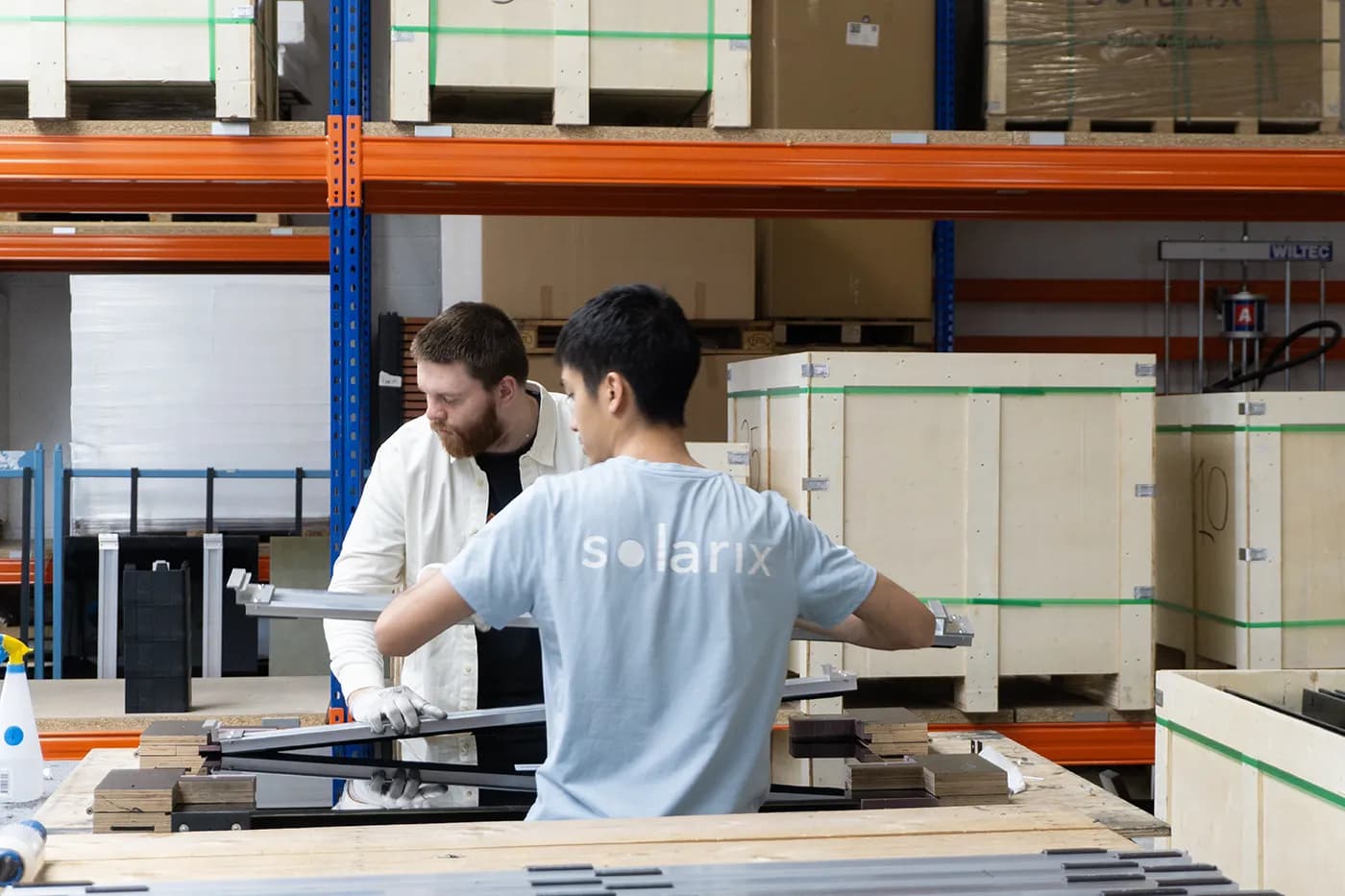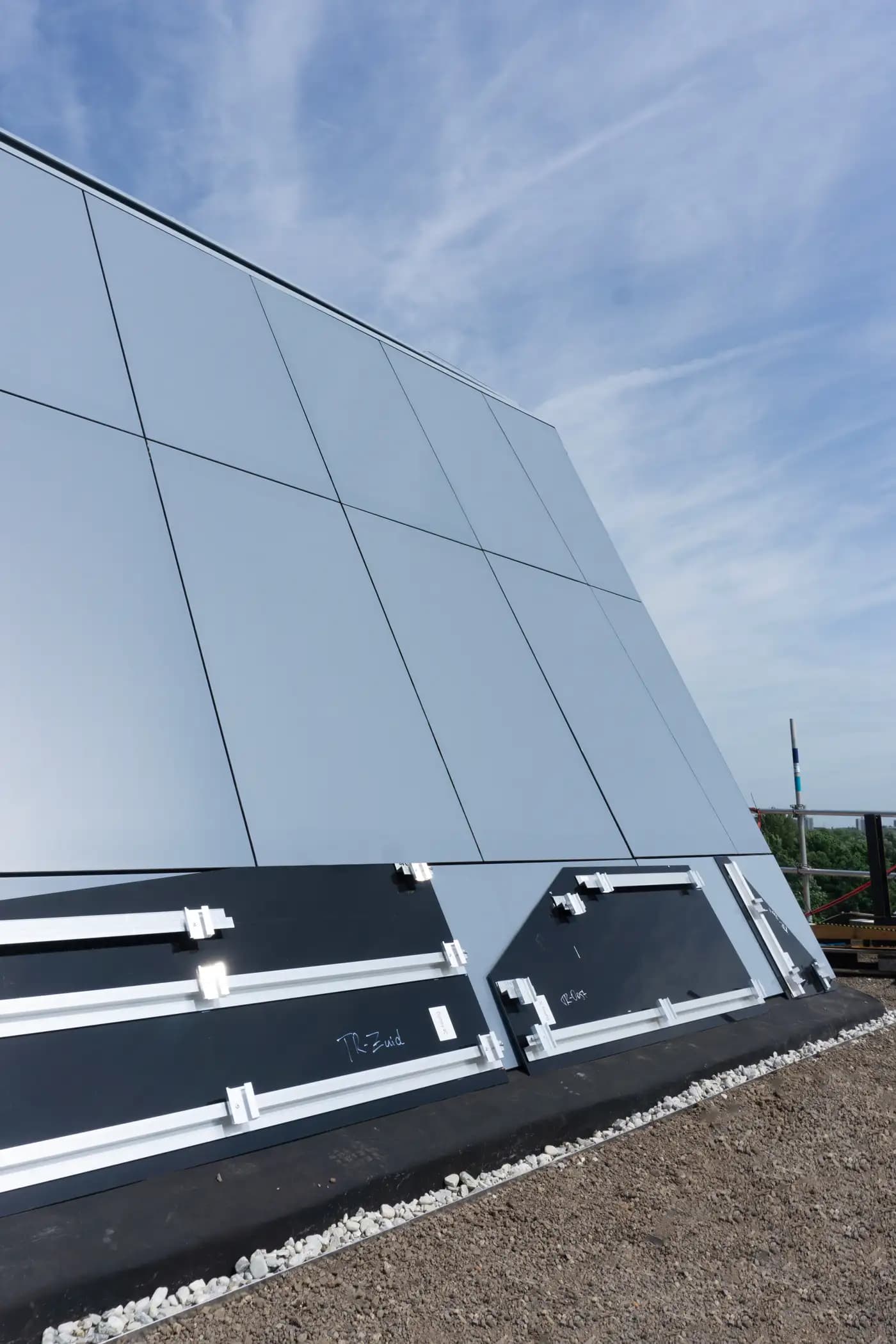The Butterfly Effect' - an ultralight web above the highway.
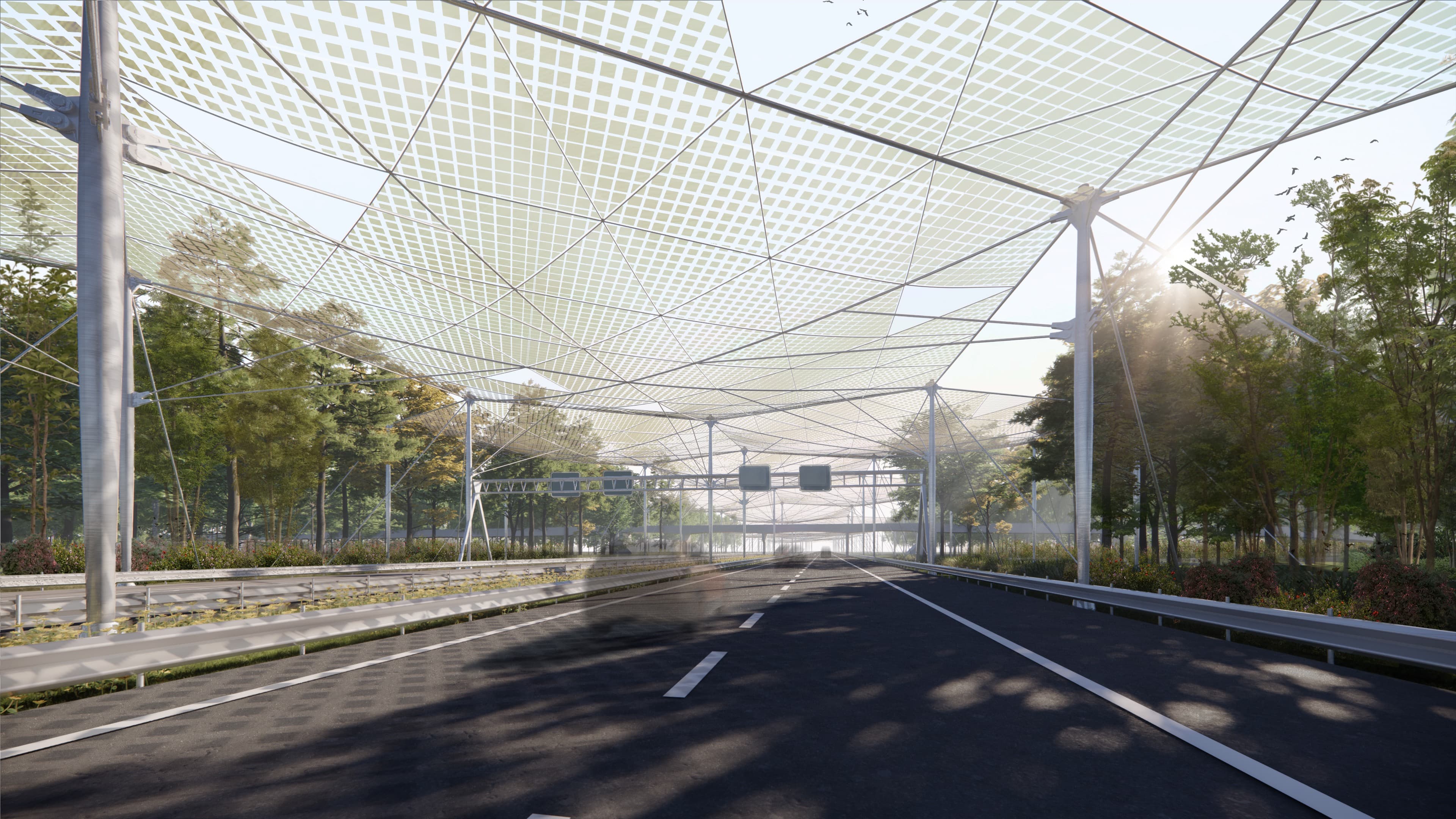
Studio Solarix, together with VenhoevenCS and DS Landschapsarchitecten, developed a surprising proposal for the Design Challenge 'Our Energy, Our Landscape!' Take a look at 'The Butterfly Effect,' where generating clean energy in an innovative and beautiful way takes center stage. Additionally, it combines restoring connections in nature and minimizing noise pollution.
The Design Challenge, organized by Kunstloc Brabant, Staatsbosbeheer, and Het Groene Woud, aligns with the increasing role of sustainability in Western society. Studio Solarix designed 'The Butterfly Effect' with the multidisciplinary team of VenHoevenCS and DS Landschapsarchitecten.
The design is essentially an ultralight web over the highway, not only intended for the challenge location at the A67 near the Strabrechtse heath but also applicable globally to infrastructure. The design enhances local ecosystems on a small scale while impacting a large-scale approach to climate change and biodiversity loss. Essentially, this principle can be applied to any road network.
Starting with the 'little creatures'
Together with VenhoevenCS and DS Landschapsarchitecten, we pooled our collective expertise, passion, and creativity to establish a sustainable and achievable future. Including nature inclusivity is crucial in addressing climate change and biodiversity loss because 'every little creature counts.'
Small creatures like insects are vital in nature. Did you know that 85% of our food depends on their pollination? A span across the highway at treetop level aids in providing a safe crossing for these small creatures. This design restores crucial connections in nature.
‘Een snelweg vormt een enorme barrière in insectenbiotopen, de insecten overleven de wervelingen niet. Vlinders en andere kleine beestjes durven bijvoorbeeld de snelweg pas over te steken als er een file staat.’
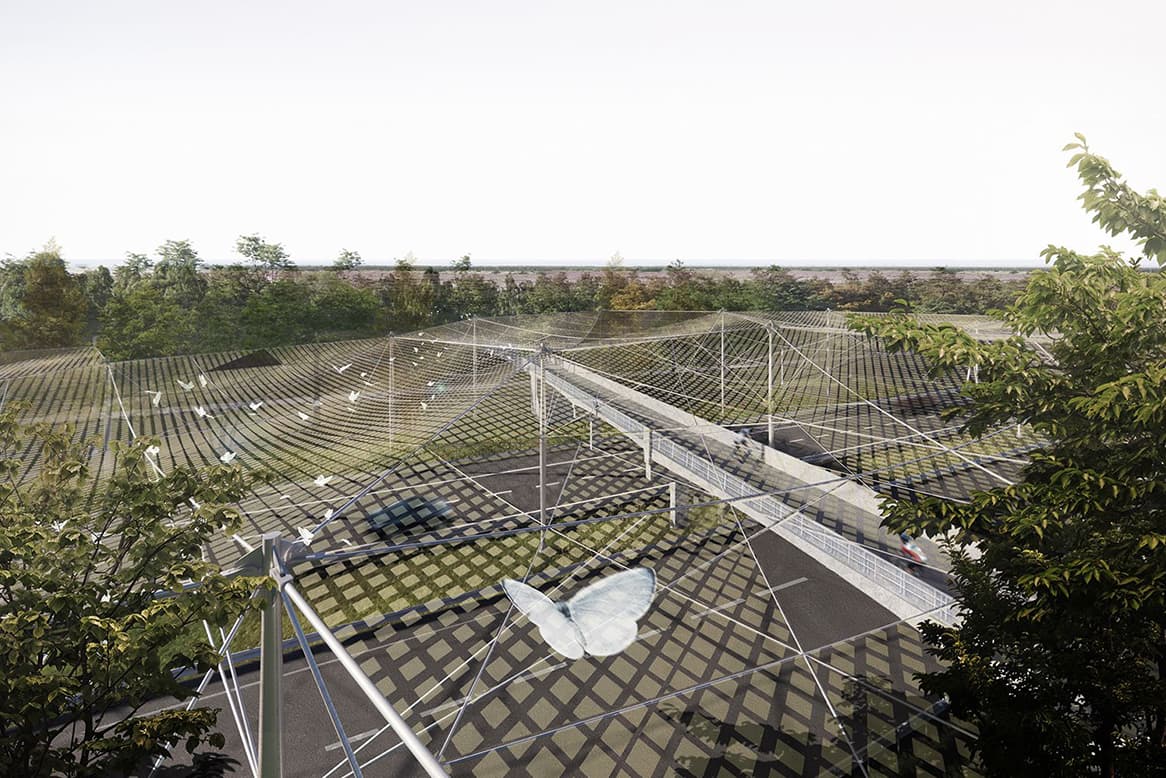
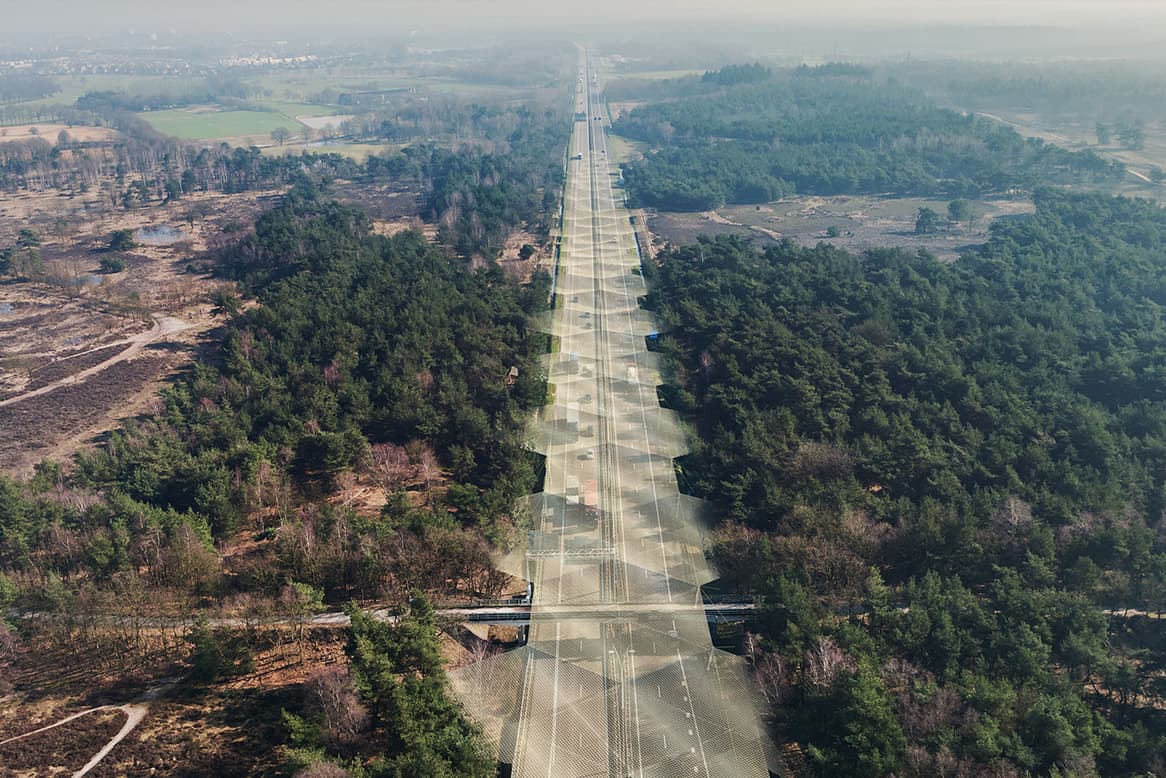
'Two Birds with One Stone'
What excites us even more is that the structure over the road offers a vast surface area for generating clean energy, aligning perfectly with Studio Solarix's sustainability vision. The lightweight 'web' with its honeycomb structure can be filled with materials that harness solar energy. It's also designed to be modular, allowing growth and evolution alongside technological innovations. By utilizing the space above the road in this way, it also prevents unnecessary loss of landscape.
No solar panel fields that cause biodiversity loss, but rather a 'web over the road' that contributes to natural connections and clean energy generation.
"Participating in this design challenge and the creative collaboration has made the importance of preserving biodiversity clearer to me. While our company was primarily focused on sustainability, aesthetics, and circularity, biodiversity has now become an essential aspect." – Reinier Bosch – Studio Solarix
Natural Sound Barrier
To maintain the focus on natural connections in the design, a simple yet effective sound barrier has been implemented. The designed structure not only generates solar energy but also allows nitrogen and particulate matter to settle into the soil. This enriches the ground alongside the road, facilitating tree growth. A significant stretch of forest significantly reduces the noise in the adjacent natural area. In other words, a natural solution as a sound barrier.
Enchanting Like a Butterfly
At Studio Solarix, we prioritize ensuring that our sustainability solutions not only offer energy benefits but also look aesthetically pleasing. We found this aspect crucial in 'The Butterfly Effect' proposal.
The beautiful shadow patterns and variations in colors and materials create a captivating experience while driving. Just as one can be mesmerized by the colors and patterns of a butterfly, this design is functional and boasts an attractive aesthetic. The 'web' could become a symbol of how we should treat nature, maintaining connections rather than losing them.
‘This design offers an aesthetic experience that references insect wings, spiders, and butterflies’
All in all, 'The Butterfly Effect' provides an original and contemporary response to the central question of the design challenge: 'How can we create a sound-absorbing design that links energy generation with the surrounding nature and also stimulates imagination?' Clean energy is generated through the spanning structure, the forest strip acts as a natural sound barrier, and the entire design captivates the imagination with its color variations and shadow dances. Just like the butterfly.
To learn more about the design challenge 'Our Energy, Our Landscape,' visit the Kunstloc Brabant website.
• 14 June 2021

